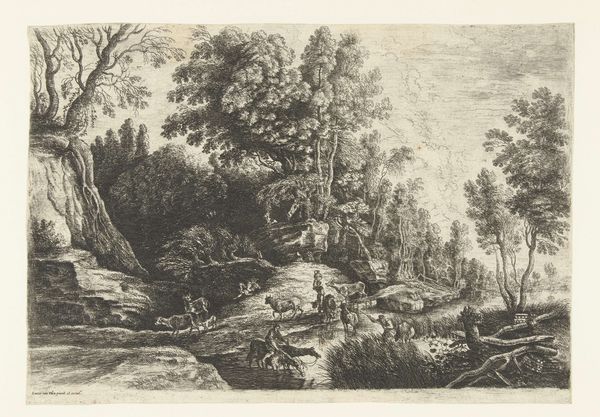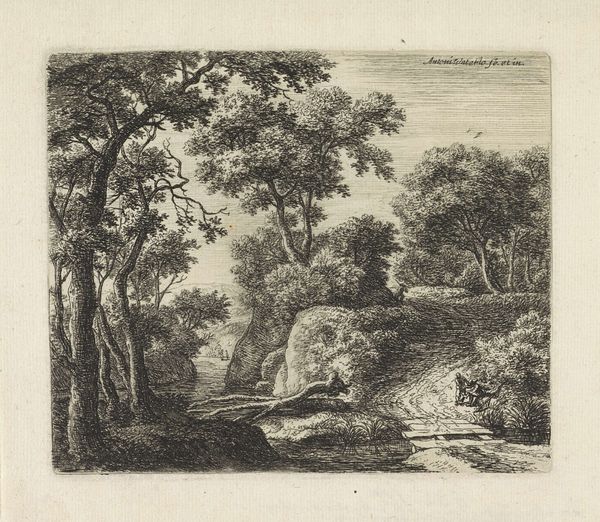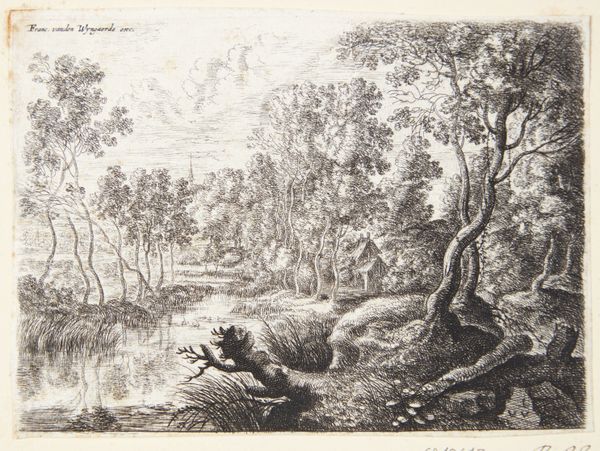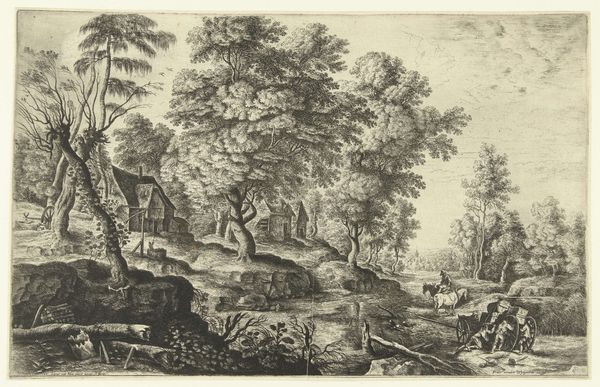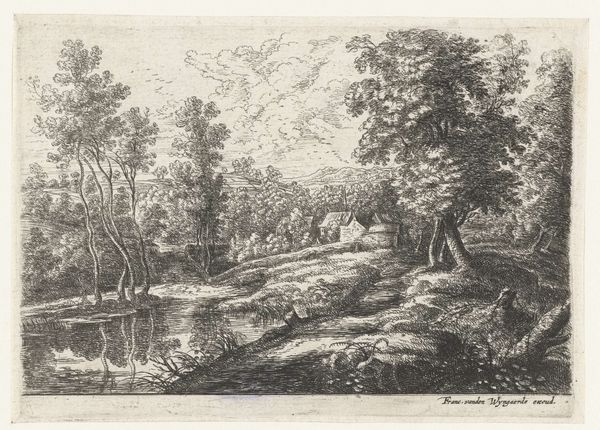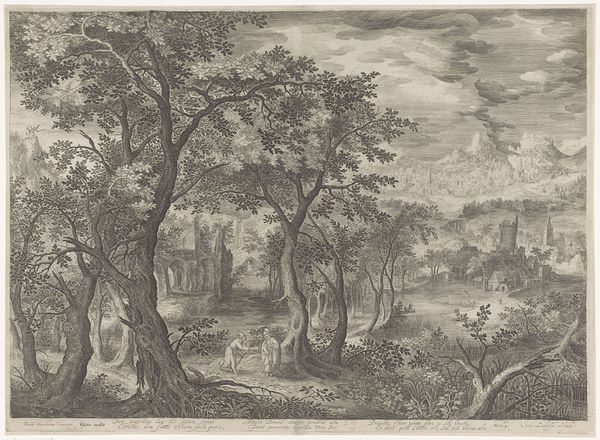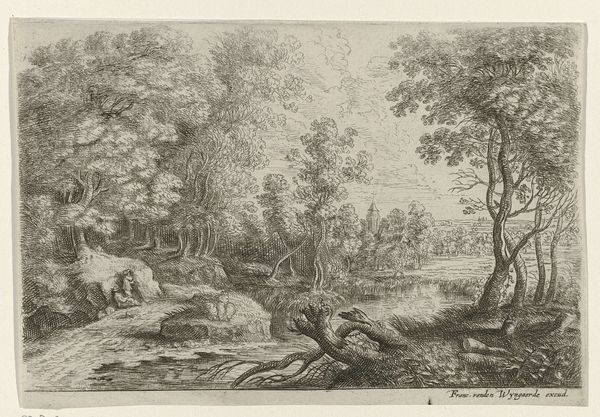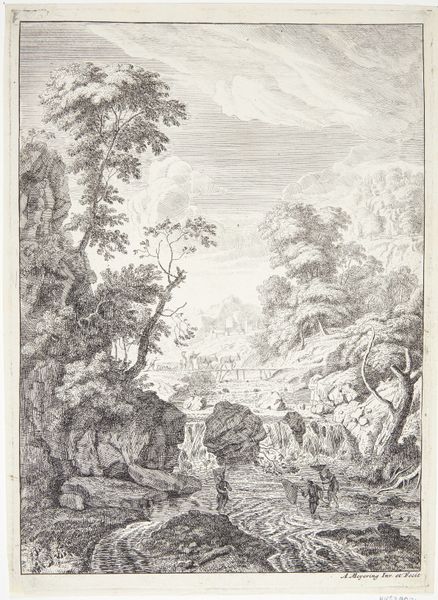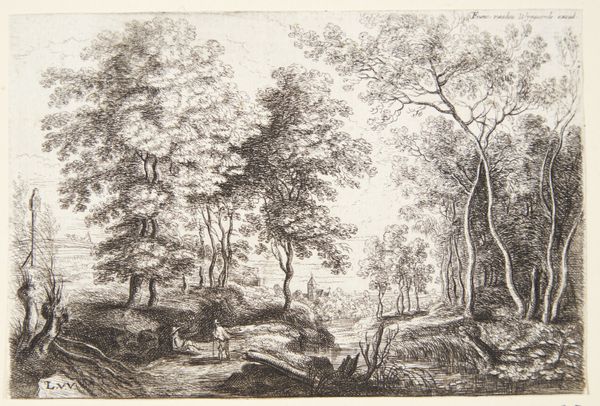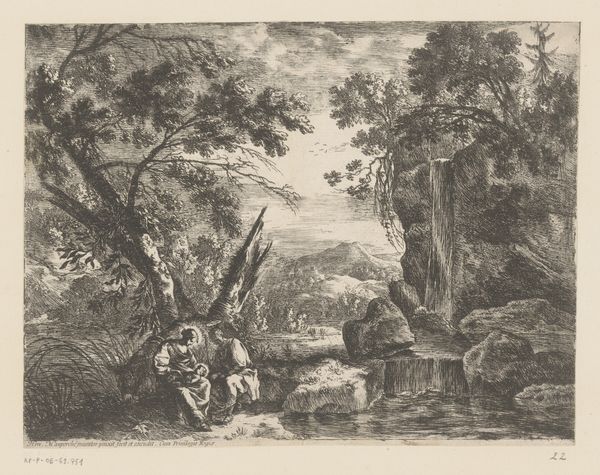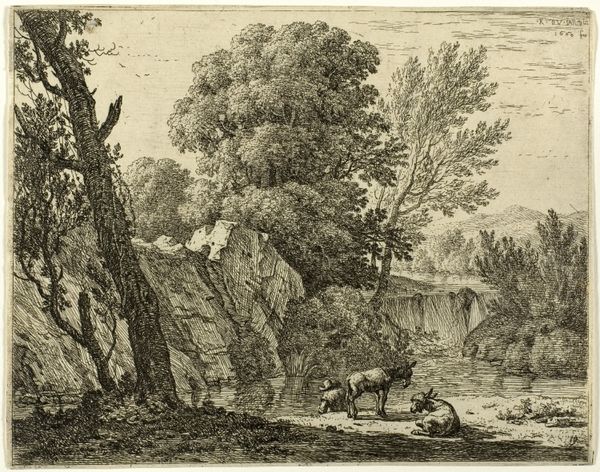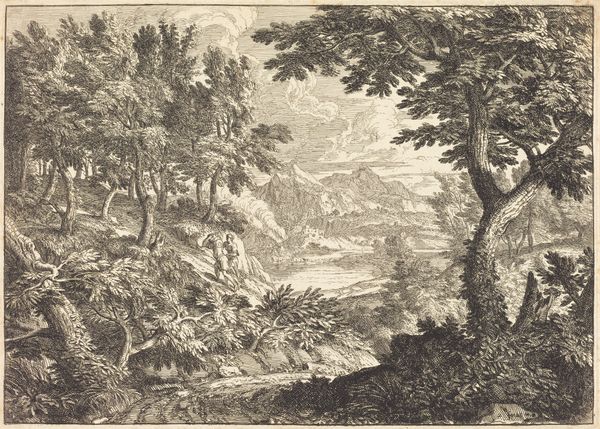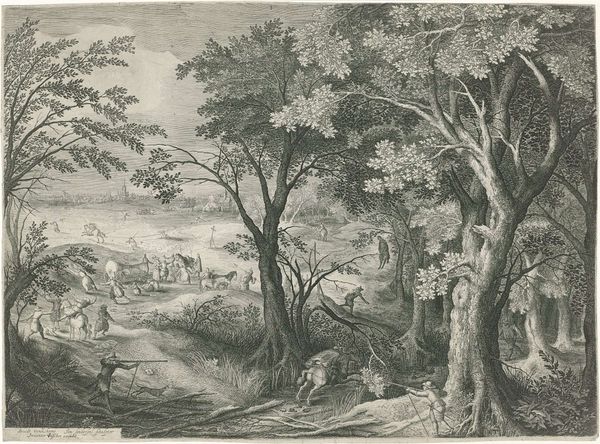
Forest Crossed by a Stream, from The Small Landscapes c. 1638
0:00
0:00
drawing, print, paper, charcoal, engraving
#
drawing
#
baroque
# print
#
landscape
#
paper
#
charcoal
#
charcoal
#
engraving
Dimensions: 304 × 443 mm (image); 317 × 450 mm (plate/sheet)
Copyright: Public Domain
Curator: Looking at this engraving, I immediately notice the light. It creates a hazy, almost dreamlike quality across the forest scene. Editor: Indeed. This is "Forest Crossed by a Stream, from The Small Landscapes," created around 1638 by Schelte Adamsz. Bolswert. It's currently held at the Art Institute of Chicago. Considering it's a print, the textures are remarkably detailed. Curator: Absolutely. I’m drawn to the depiction of the shepherd and his flock. He's carefully guiding them across this tiny, precarious bridge. The shepherd’s control over the means to continue to make this crossing represents the subjugated masses and reminds me of class structure issues during the age of colonization, as many people were exploited and transported over masses of land by the colonizers. Editor: That's a fascinating interpretation. From my perspective, consider the materials—charcoal and engraving. There is something compelling about taking fleeting material and converting it into an industry of mass production that can influence consumption patterns and ideologies on land use. We must keep in mind this image reproduces an image that most people could not visit. It also serves as propaganda for using land as one see’s fit, furthering notions that the resources could be exploited. Curator: It certainly emphasizes the complex interplay between human action and the natural environment. These images speak to cultural narratives prevalent in that time of domination over lands and people. Editor: Well, and how landscape itself becomes a commodity, circulated through prints like these. I agree, the interplay of exploitation and environmental resource usage for commerce is strong in this engraving. How Bolswert highlights textures through hatching emphasizes the act of laboring and mass consumption from the working class. Curator: It seems to suggest, a certain perspective that art provides not just a glimpse into an aesthetic ideal, but also acts as a signifier that embodies the power dynamics inherent within society. Editor: And the cycle of production. From resource, to object, to image, to consumption. It leaves one pondering about both art and societal influence from the materiality and mass making process.
Comments
No comments
Be the first to comment and join the conversation on the ultimate creative platform.
